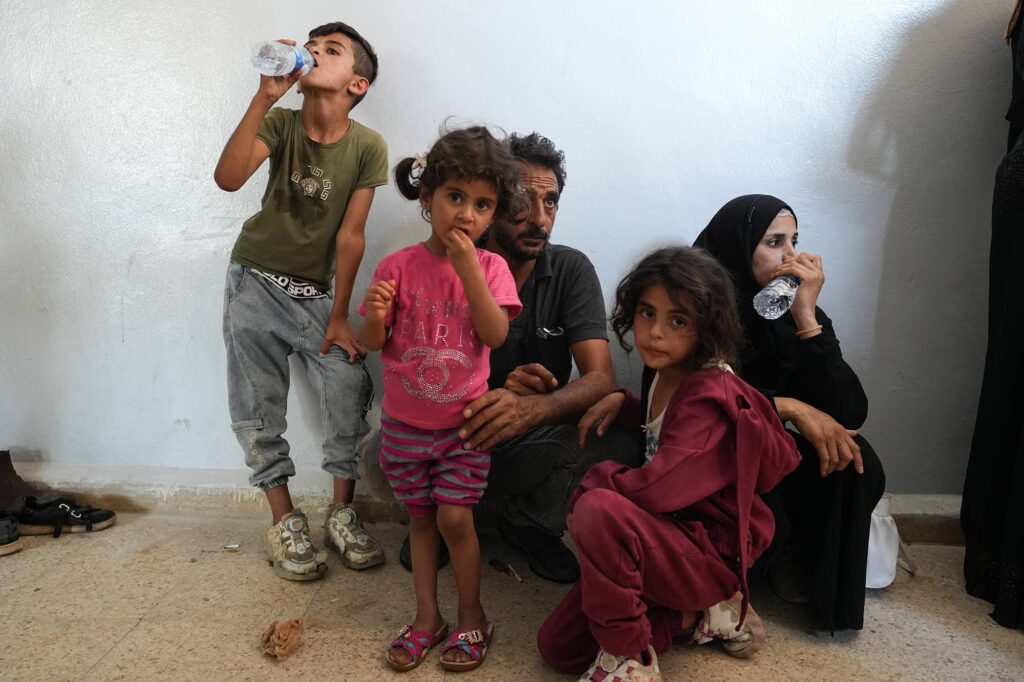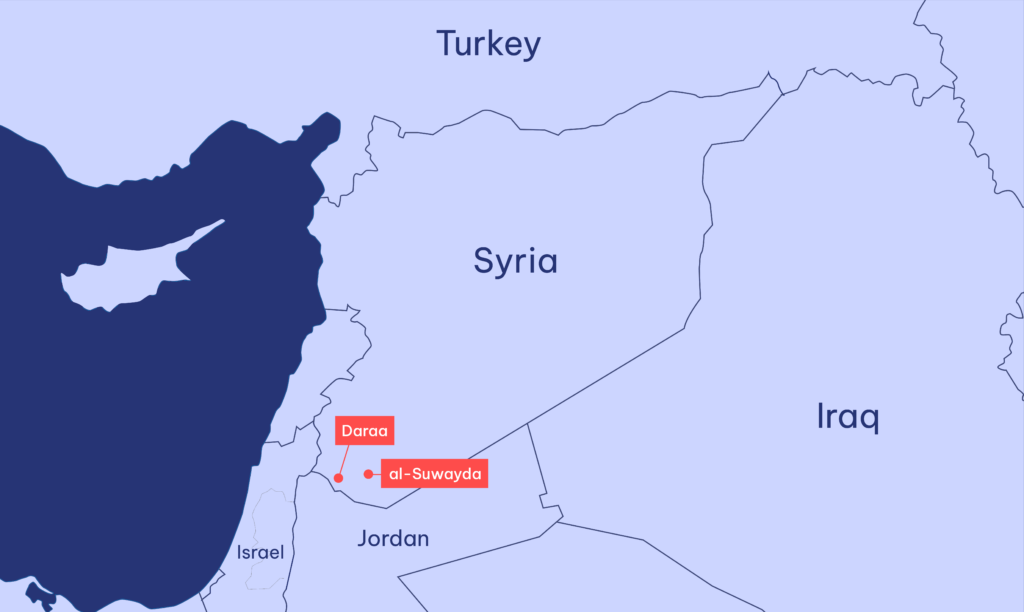In Syria, the southwestern governorate of al-Suwayda is collapsing under shortages of food, water, and fuel. The Druze, who follow a heterodox religion which is an offshoot of Islam, are the majority in al-Suwayda, with smaller communities of Sunni Muslim Bedouin and Christians. Traditionally the area was known as Jabal al-Druze (Druze Mountain). Al-Suwayda is a litmus test for whether the government of Ahmed al-Shara’a can avoid cycles of minority repression, extremist violence, and foreign intervention that have defined Syria in the past.
In July, violence erupted in al-Suwayda between Sunni Muslim Bedouins and Druze. Government forces sided with the Bedouins rather than protecting both communities, leaving over a thousand dead and a hundred thousand displaced. Regime-aligned forces allegedly executed hundreds of civilians. A new agreement between Washington, Amman, and Damascus promises investigations and reconciliation efforts, but offers no mechanisms for immediate humanitarian relief.
Even after the ceasefire, the humanitarian situation in Suwayda is deteriorating. Residents receive only one-third of daily flour needs, while water has dropped to 20 percent of requirements. Fuel and cooking gas remain scarce. Aid convoys deliver far less than the 160,000 liters of fuel and 4,000 gas cylinders required daily, while electricity flows remain unreliable. Schools still shelter displaced families, keeping more than 10,000 children out of class.

Unrest in al-Suwayda would set back both Israeli and US interests. Israel’s government, backed by its influential Druze community, calls supporting Syria’s Druze a moral and strategic obligation. The Trump administration has prioritized keeping Syria whole. Both countries can achieve their aims by working to open an Israel-Suwayda humanitarian corridor.
There are four theoretical ways to deliver aid, two of which are not viable and the third logistically complex.
First, Damascus insists all assistance must move through its government ministries. That has already failed. Despite near daily convoys since late-July, aid covers only about ten percent of displaced residents. Sources tell us that Damascus loyalists loot the contents of aid packages. The new regime is unable or unwilling to assist its Druze citizens.
Second, a corridor through Jordan, which directly borders Suwayda, would be practical. But Amman has refused requests to facilitate Druze aid, unwilling to inflame tensions with Jordan’s own Bedouin population who sympathize with tribes that fought Suwayda’s Druze militias.
A third way is via the autonomous Kurdish region in northeast Syria, the Syrian Democratic Forces, who have offered assistance. But getting aid first to the Kurds and then to al-Suwayda requires moving large quantities over long distances.
That leaves Israel. It has already delivered emergency air drops but these do not suffice. A corridor from Israel into al-Suwayda, a distance of about 35 miles albeit cutting through Daraa Governorate, is the only workable option to move large volumes of aid. With international oversight, such a humanitarian corridor could provide relief while minimizing diversion and the risk of theft.

But for this to work, the regime in Damascus must guarantee safe passage, not just give nominal approval, otherwise the corridor will collapse under the same obstruction and looting that plague current aid efforts. Washington has asked, but Damascus has refused.
Damascus cites weapon-smuggling risks as the reason for denying an Israel-Suwayda corridor. But Druze militias are already armed; their real concern is legitimizing Israeli involvement. But Israel wouldn’t be moving the aid itself; neutral international organizations would handle delivery from the Israeli starting point.
Washington holds the leverage to make a corridor happen: the Caesar Syria Civilian Protection Act of 2019, which imposes severe sanctions on the Syrian government.
To speed reconstruction, the Trump administration temporarily waived in May this law’s sanctions. In November, when the waiver comes up for renewal, it should be contingent on Damascus allowing an internationally supervised corridor into al-Suwayda. Syria’s sanctions relief must also be tied to benchmarks, such as aid delivery rates, third-party verification, and protection of civilians, creating incentives Damascus cannot ignore. Failure to comply should mean the immediate suspension of waivers and the snapback of full sanctions.
Convoys could be organized by the United Nations and the International Committee of the Red Cross, with random inspections, biometric receipts, and weekly publication of delivery data. A Damascus-Jerusalem deconfliction hotline would guarantee safe passage, preventing miscalculations that could escalate into broader conflict.
The alternative allows al-Suwayda to wither under Damascus’s control, guaranteeing shortages, unrest, and renewed violence. That would destabilize southern Syria, empower extremists, and possibly create conditions for Iran to exploit Syrian vulnerabilities. Syria’s Druze have waited long enough.
Washington should act decisively. Tie Caesar Act relief to a real humanitarian lifeline, and force Damascus to choose: permit an internationally-supervised corridor or face renewed isolation.



